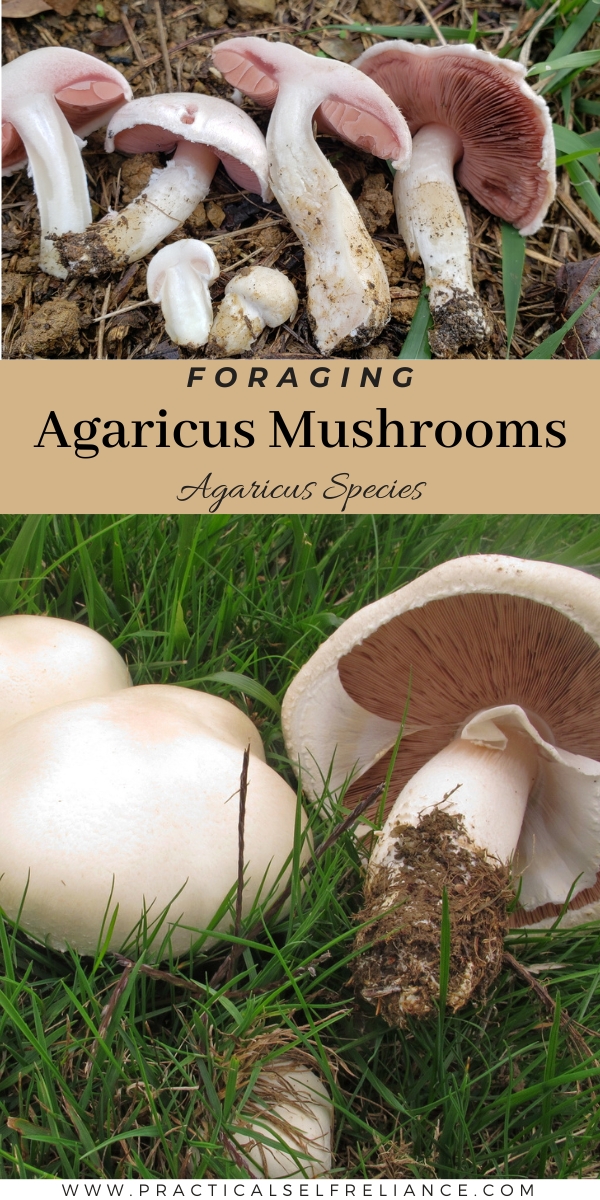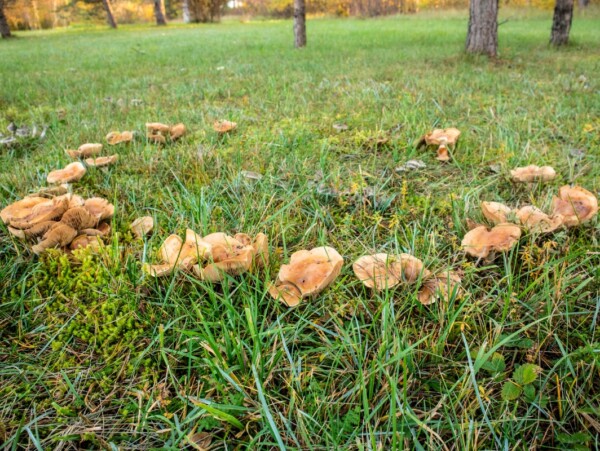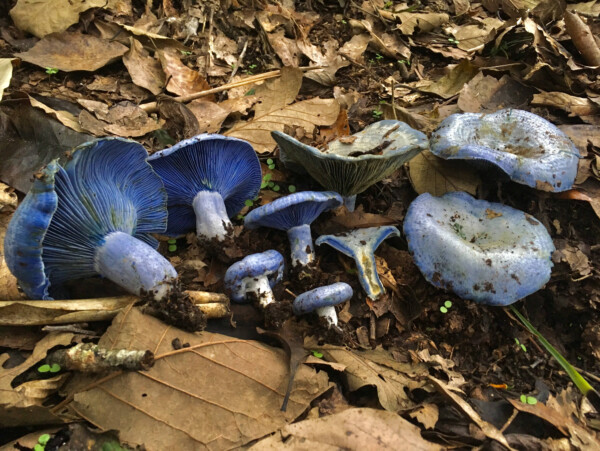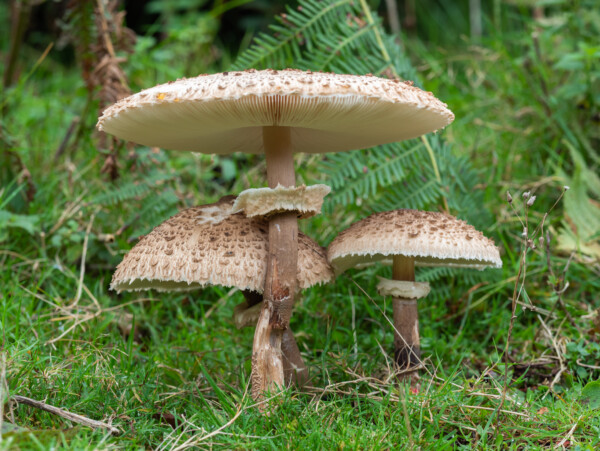Affiliate disclosure: This post may contain affiliate links. Please see our Privacy Policy.
Agaricus Mushrooms are commonly cultivated mushrooms, popular with greenhouse growers because they thrive in warm, moist environments and feed on compost. They’re also common wild mushrooms, and you can forage them as well!
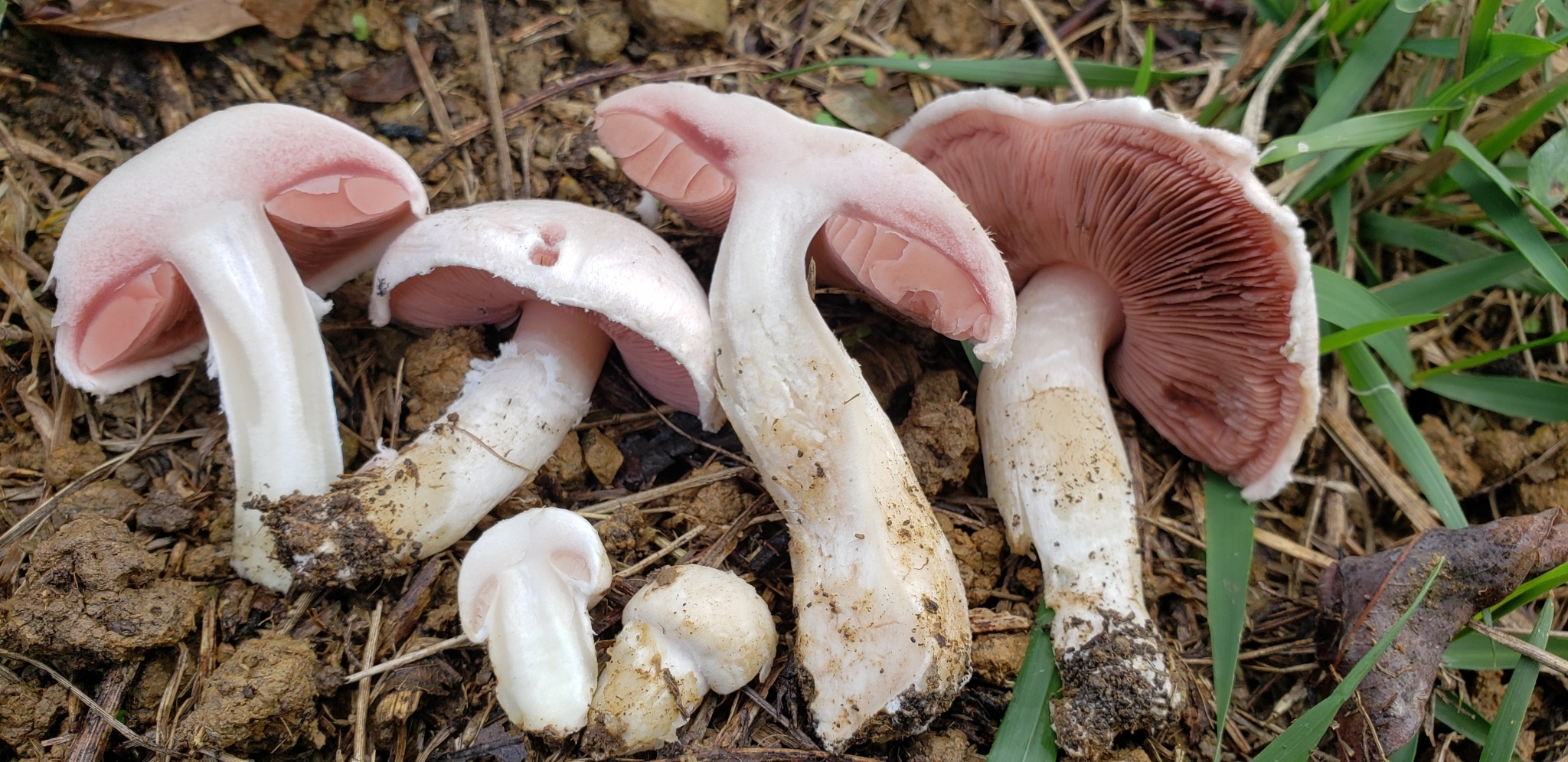
This article was written by Timo Mendez, a freelance writer and amateur mycologist who has foraged wild mushrooms all over the world.
Agaricus mushrooms are a widely dispersed group of fungi that includes both toxic and edible species. The most famous of these is the store-bought button mushroom (Agaricus bisporus). We all recognize it from pizza toppings and the old can of mushroom soup. Despite the fame of the button mushroom, few people know how delicious its wild relatives are. After all, most wild Agaricus mushrooms go overlooked by foragers, enthusiasts, and foodies.
This isn’t because they’re not worthwhile, as many species are exquisite, but likely because they are less abundant than other foraged mushrooms. Don’t get me wrong, you can find Agaricus mushrooms almost everywhere in any type of habitat, but rarely in vast and expansive quantities.
While many of them are picked in traditional contexts around the world, in the United States, they are a group of mushrooms mostly picked by committed enthusiasts. For me, species like the Prince Agaricus (Agaricus augustus) are near the top of the list of favorite edibles. This mushroom and its relatives have an almond-extract type of flavor that is largely unrivaled.
It’s sweet, savory, and an absolute joy to eat. It’s a bit like the flavor of a common button mushroom or portobello, but sweeter and multiplied by ten. While I enjoy the cultivated varieties just fine, I must say that the wild Agaricus species are much better in terms of flavor.
Curious where to find them? I’ll take you through everything you need to know to safely pick Agaricus mushrooms and turn them into a scrumptious meal.
Natural History of Agaricus Mushrooms
There are more than 100 different types of Agaricus mushrooms that occur all across the world. Each of these has a unique ecology, morphology, and habitat. Many of these are delicious edibles, and a handful are known to be toxic. Only a few species are regularly foraged and consumed.
Ecologically, Agaricus mushrooms are decomposers that grow in soils rich in organic matter. They are often considered “secondary decomposers” since they thrive on already decomposed and broken-down materials. For example, many species thrive in compost, and others directly from rich, fertile garden soils. They also have an affinity for manure, and thus they can be found near animal stables or pastures where animals are grazed. Meadows, parks, lawns, and grasslands with rich organic soil are also home to various Agaricus species. A handful of species also occur in forests, and some have a special affinity for cypress.
Due to their occurrence in unique ecological contexts where organic matter and nutrients are accumulated, they don’t tend to be as abundant as other species. They often occur abruptly and in widely dispersed patches. There might be some here or there, and sometimes you can get really big flushes, but it is less consistent than some other choice edibles. The great thing is that once you find a patch, it is likely to fruit year after year. Over the years, you may be able to accumulate dozens of patches that you can check when the season is ripe.
Identifying Agaricus Mushrooms
While anyone can learn to identify an Agaricus, they are not typically considered mushrooms for beginners. I wouldn’t say they’re particularly tricky, but they might not be as clear-cut as some other groups of fungi. Generally speaking, all gilled mushrooms, like Agaricus, are often reserved for people who already have experience with mushroom foraging. This being said, discerning an edible Agaricus from a toxic mushroom isn’t rocket science. A careful, diligent, and observant beginner can easily learn to recognize these mushrooms.
Furthermore, I’ll mention again that there are a handful of toxic agaricus mushrooms. None are considered deadly, but they can result in serious intoxications. For this reason, knowing how to properly identify both the toxic and edible species of Agaricus is important. Below, I’ll describe the identification features of the entire group of Agaricus mushrooms, and afterwards, I’ll discuss how to distinguish some of the best edible species.
The Genus Agaricus
Despite Agaricus mushrooms being a seemingly generic stem-cap mushroom with gills, the group is relatively clear-cut and easy to distinguish from other genera. Notably, young Agaricus have pink-colored gills that turn chocolate brown/black as they mature. The spores of the mushroom are of the same dark chocolate color and can often be seen around older specimens. This is a very distinct feature of Agaricus mushrooms.
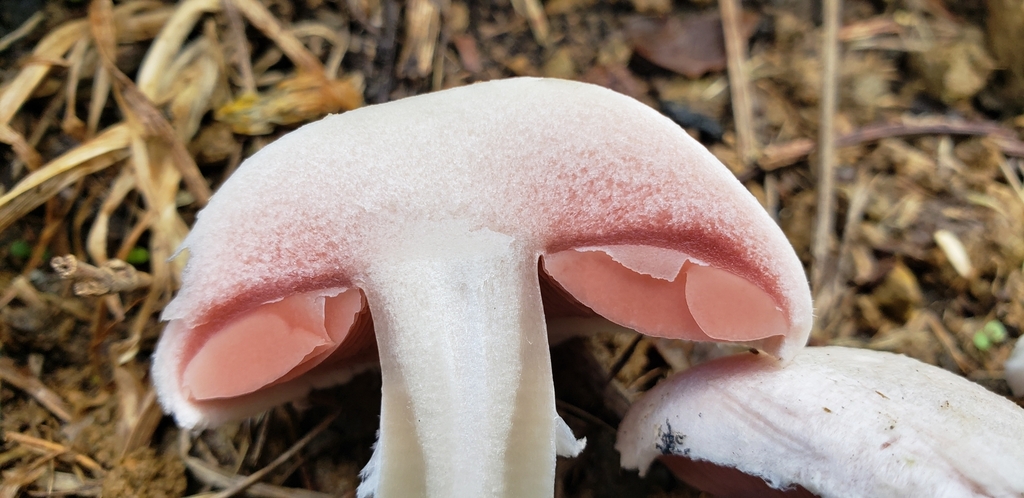
Young specimens have spherical closed caps. As the mushroom matures, it grows and opens up like an umbrella.
Some species have a thin white tissue (partial veil)l that covers the gills of young mushrooms.
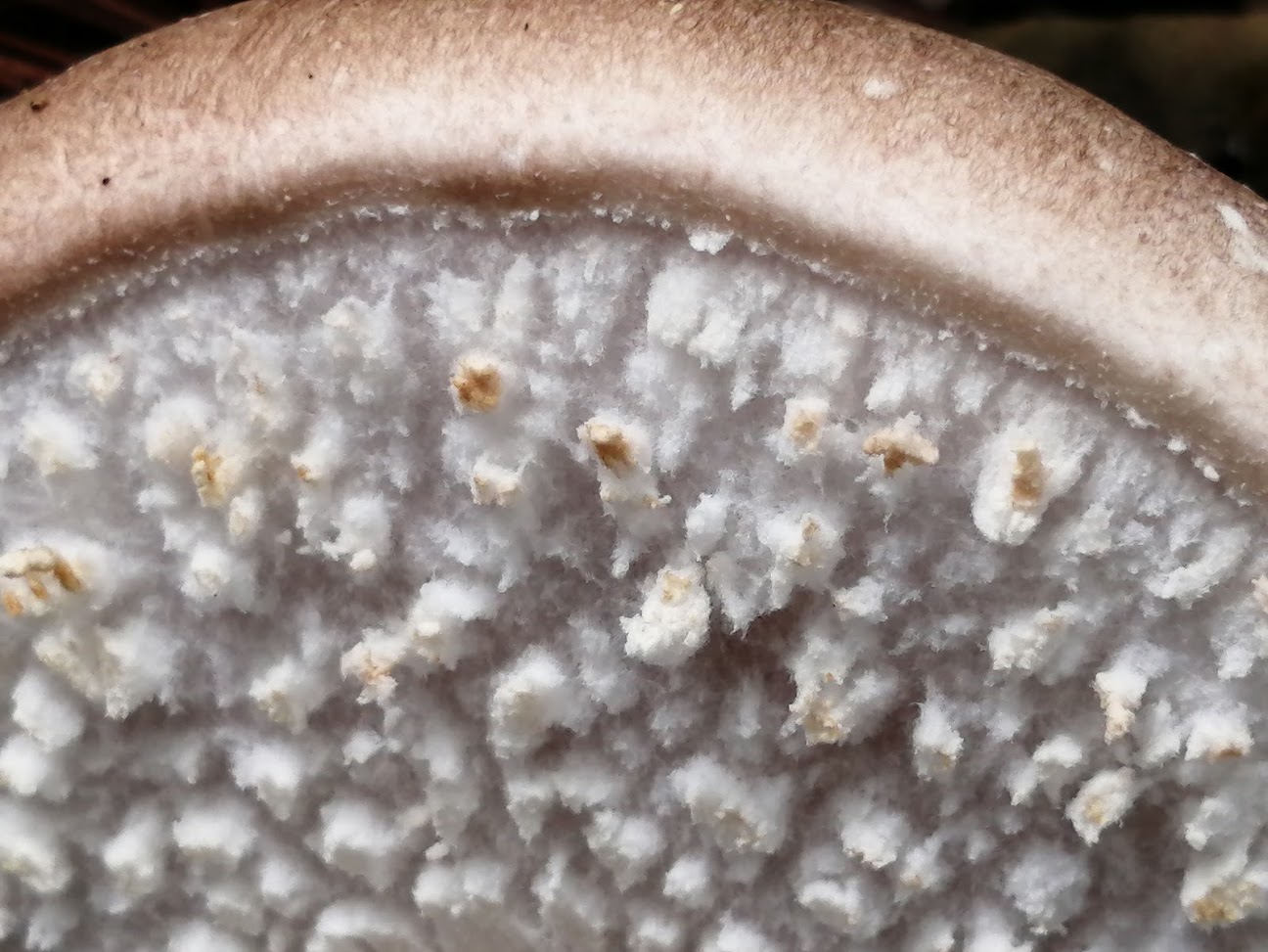
As the mushroom matures, this partial veil attaches to the stem and forms a distinct ring (annulus).
The ring may be large and skirt-like, while in some species, it is more sheath-like. The bottom of the stem does not have a bulbous or sac-like base, as is the case in Amanitas.

Generally speaking, Agaricus mushrooms are white, with some species having brown caps.
Similar to white button mushrooms or portobellos. Some of them stay small, only 5–10 cm in height, while others can easily reach up to 30 cm.
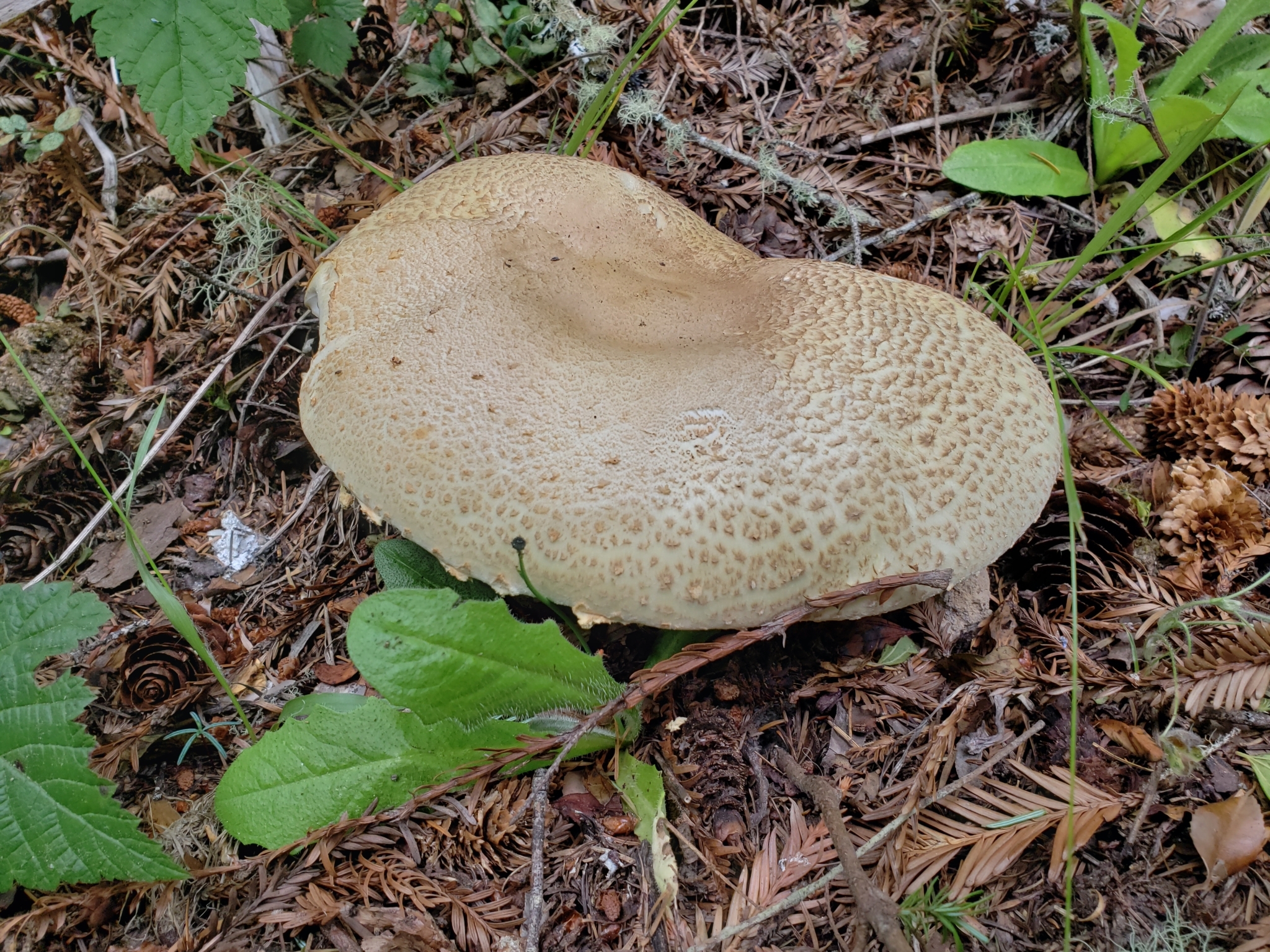
While some Agaricus species have mild odors, others have very distinct fragrances that can help with the identification of the species. Some of the most delicious varieties have a sweet almond-like smell, while toxic varieties may have a phenolic “chemical” type of odor. This phenolic odor is often compared to that of bleach or paint. The varieties that stain quickly and intensely yellow when bruised are also generally considered toxic. Many edible species also stain red.
Identification Features Of Agaricus Mushrooms
- Pink-colored gills in young specimens, turning chocolate brown/black as they mature.
- Dark chocolate-colored spores.
- The presence of a partial veil in very young mushrooms forms a distinct annulus as they mature.
- Absence of a bulbous or sac-like base on the stem.
- Some species have textured caps with small brown scales.
- Fragrances range from mild to distinct. Many edible species have a sweet almond-like aroma, while toxic species have a more bleach-like phenolic odor.
- Many toxic species of Agaricus stain yellow intensely and quickly. Avoid these species!
Remember, these are simply the identification features for 100+ Agaricus mushrooms. This includes both toxic and edible species! Below, I’ll discuss the identification features of specific edible species you should look out for.
Common Edible Agaricus Species
The Field Mushroom (Agaricus campestris)
These are the iconic field mushrooms. They are common in grasslands all across the world and occur from low elevations up into alpine regions. You can find them in natural grasslands such as meadows or pastures, but also in artificially maintained lawns within parks or sports fields. They can occur almost any time of the year when moisture is abundant and temperatures are well above freezing.
They are distinguished easily by their white color, small structure, and rose-colored gills. They also have no staining reactions when bruised or scratched, and they have a sweet aroma. On the west coast, they can be mistaken for some toxic, phenolic-smelling species (such as Agaricus californicus). They are relatively small mushrooms, generally reaching between 4 and 10 cm in size. The stems are just 1-2 cm in thickness at most. Some specimens may have a yellow-to-tan tone on their cap with very faint scales. They tend to occur in patches, but not often in clusters.
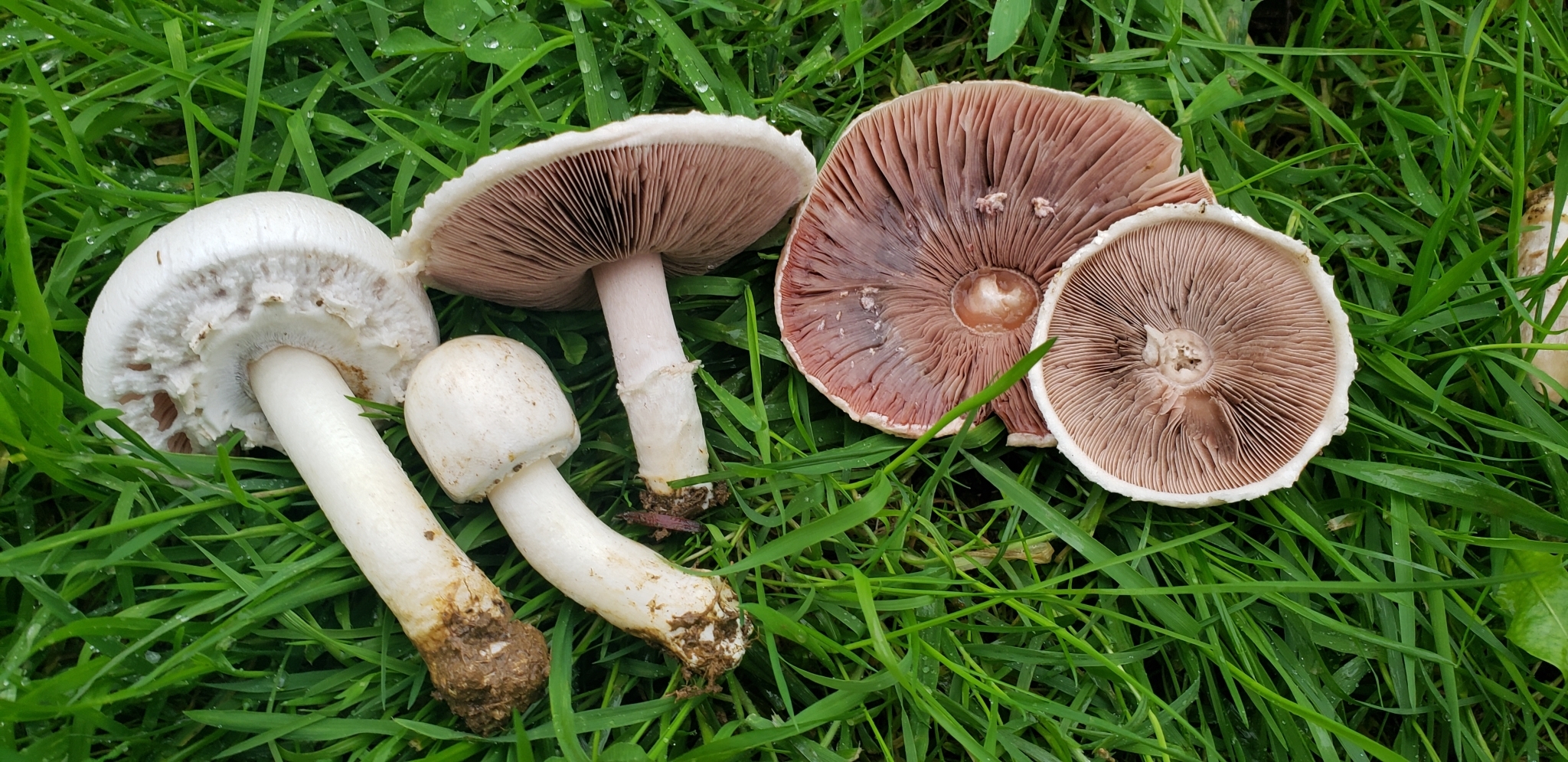
Horse Mushroom (Agaricus arvensis)
The horse mushroom is similar to the field mushroom but larger and more dense. They can easily be larger than 10 cm and have stems that are 3–4 cm in width. It also has a completely white and smooth cap.
It also has a mild yellow staining reaction, but nowhere near as strong as the toxic yellow staining species.
It has a pleasant odor, reminiscent of anise or almond. Horse mushrooms also occur readily in grassy areas and on the sides of trails. These mushrooms can occur solitary but often occur in tight clusters of 2–4 mushrooms.
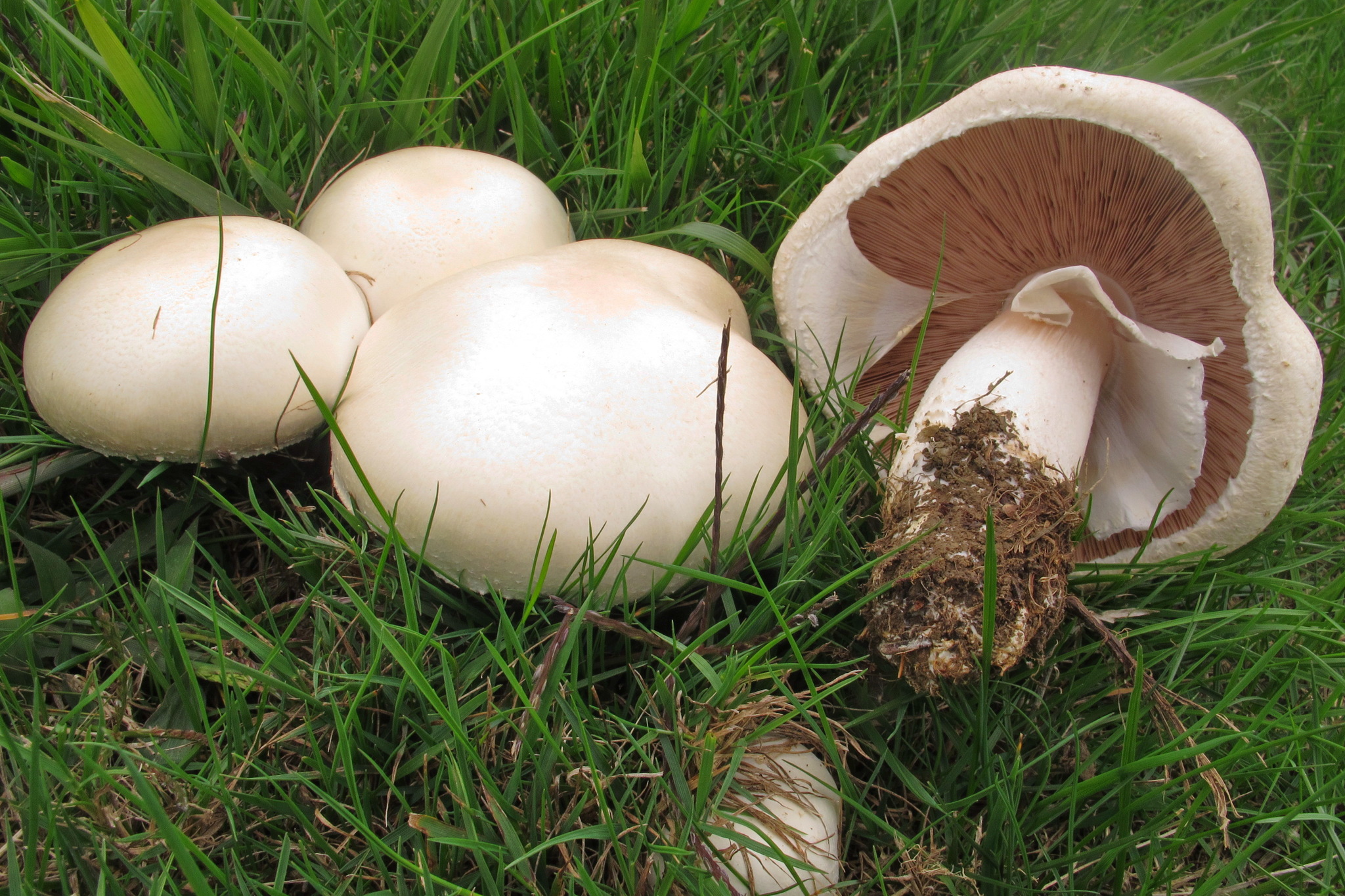
Prince Agaricus (Agaricus augustus)
The prince is one of the best and most highly regarded Agaricus species. They can be big, meaty, and extremely flavorful. It has the paramount Agaricus flavor, which is sweet, almondy, and rich in umami. They are also exquisitely beautiful mushrooms.
One of the first things you’ll notice about these mushrooms is their size. They can easily reach up to 30 cm in size with caps of equal length and diameter. Even the buttons are large, chunky, and noticeably dense. The second thing you’ll notice is the brownish-tan cap. Upon closer inspection, you’ll notice that the caps get this color from brown fibrous scales present on their surface. When the mushroom caps are smaller, the scales are closer together, giving the cap a darker appearance. The other thing you may notice is the shaggy stem with a prominent fleshy ring.
On younger specimens, this tissue covers the gills of the mushroom completely like a white sheath. At this stage, the gills are usually pink but eventually turn brown with time. You’ll notice that the cap of Prince Agaricus also stains yellow vaguely, but nowhere near as intensely as toxic species. One of the final things you should observe is the delicious almond smell.
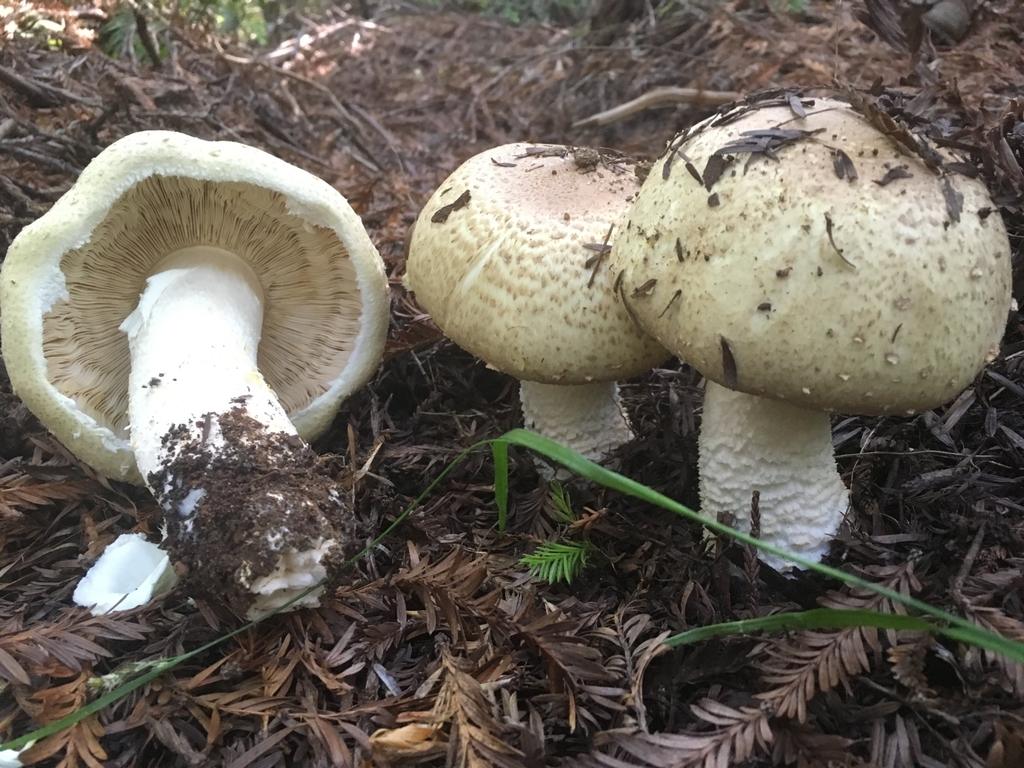
Almond Agaricus (Agaricus subrufescens)
The almond-scented Agaricus is very similar to the Prince Agaricus. The main difference is that the Almond Agaricus has a smooth and pale stem. It also does not occur on the west coast.
Almond Agaricus also tends to fruit during warm and humid times of the year and because of this, it is often found in greenhouses.
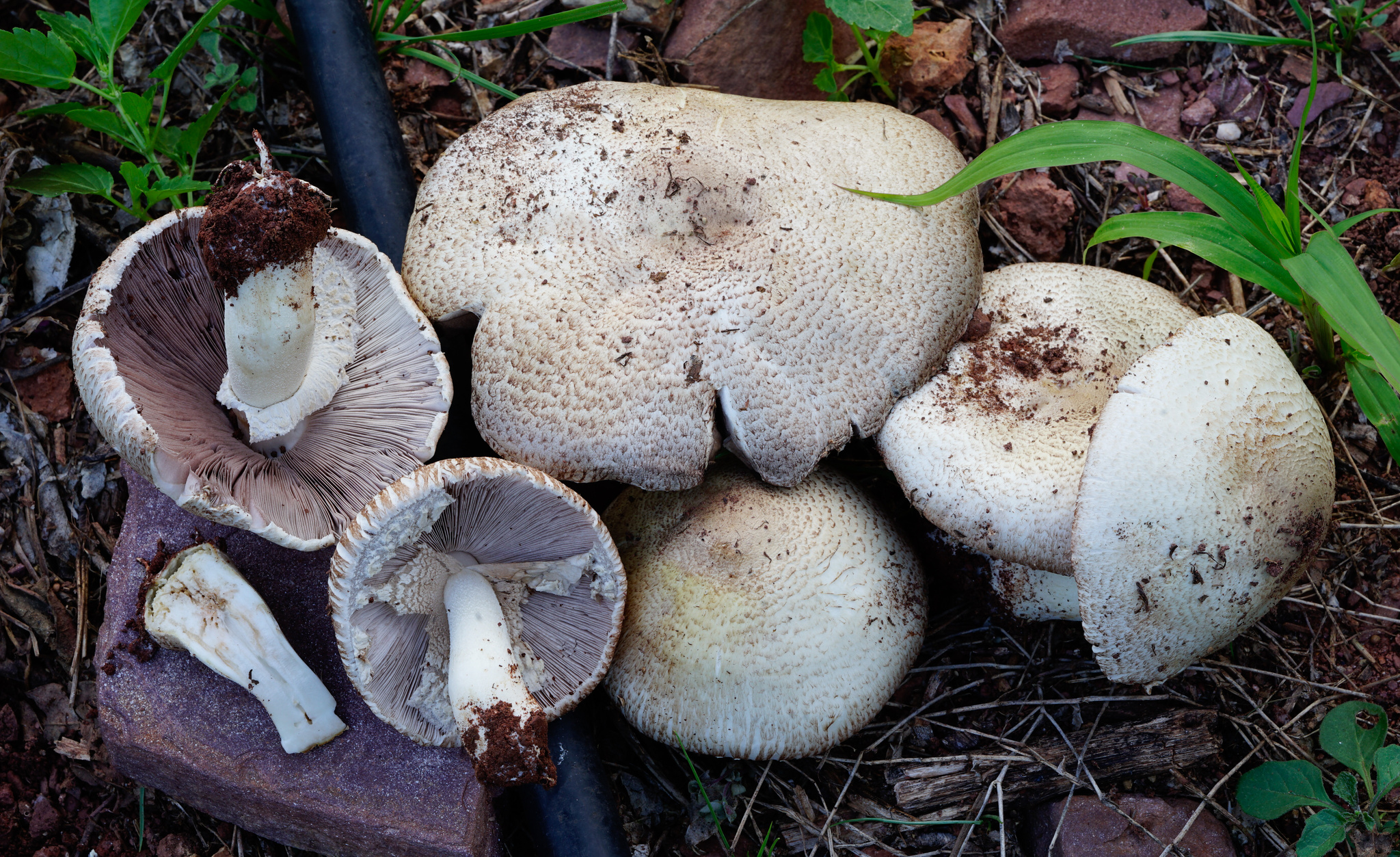
Other Edible Agaricus
Above, I’ve mentioned some of the most well-known and common edible Agaricus, but these aren’t all of them. There are well over a dozen edible Agaricus that readers may be capable of finding, depending on where they are located. Agaricus lilaceps, Agaricus bernardii, and Agaricus bitorquis are all other examples of edible Agaricus.
Almost all edible Agaricus have sweet, pleasant odors, while none have intense yellow staining. Red-staining species are also generally considered edible. While I don’t recommend you use any of these as a rule of thumb, it can be a good clue that you have an edible Agaricus and provide further enthusiasm to identify your find properly.
Agaricus Mushroom Lookalikes
Yellow Stainer (Agaricus xanthodermus sensu lato)
This is a common Agaricus mushroom that can cause some serious intoxications. It looks very similar to the field mushroom but has at least 2 distinct characteristics. The first is that the toxic Yellow Stainer, well, stains yellow very intensely. Within an instance of scratching or damaging the cap, a bright yellow color change occurs on its surface. Some other edible Agaricus stain yellow, but it’s much more mild and slower. The other thing you will notice on Yellow Stainer mushrooms is a phenolic chemical-like odor.
Just to clarify, there are a handful of species that are very similar to Agaricus xanthoderma. As a rule of thumb, avoid all intensely yellow-staining mushrooms and those with phenolic odors.

Amanitas (Amanita sp.)
Amanitas are a large group of fungi that contain highly toxic species. Like Agaricus, it is a stem-cap mushroom with gills and a ring, so there’s no doubt being able to differentiate them is important. One of the main differences of Amanitas is that they have white gills throughout their whole life. The spores are also light in color.
This differs from Agaricus, which has pink gills when young that turn dark brown/black. The spores are also dark. The second thing is that Amanitas grow from an egg/sack that is found at the base of the stem. Agaricus does not.
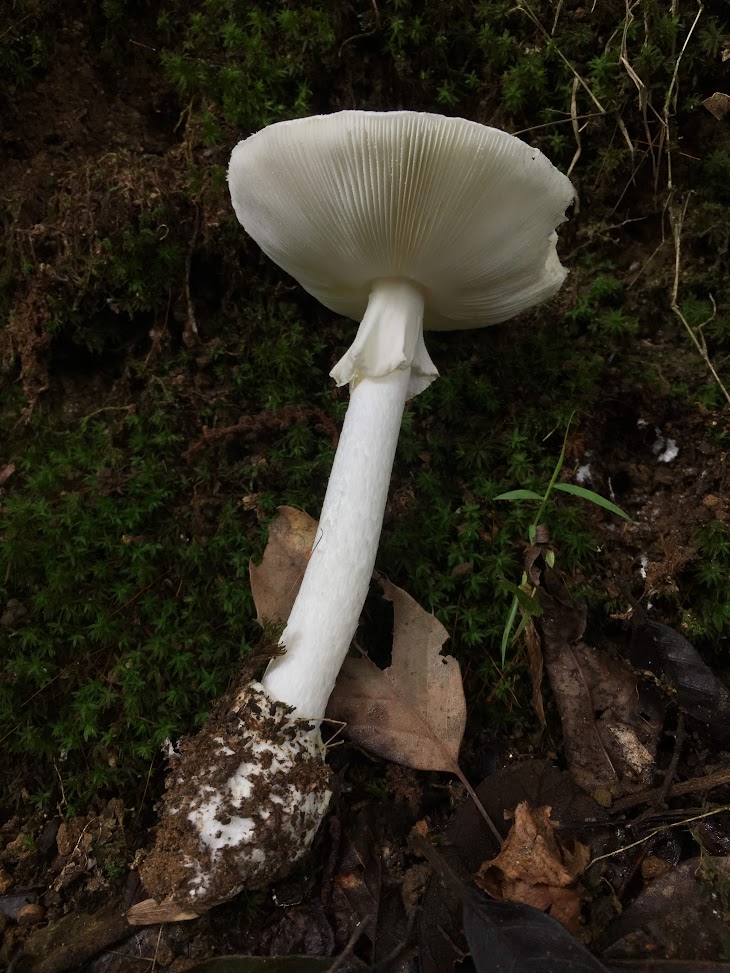
Wine Caps (Stropharia rugosoannulata)
Wine Caps are edible mushrooms that may be mistaken for Agaricus. They are very similar but can be differentiated by the purplish-colored cap.
Wine Caps also have gills that start white, then go to grey, and eventually turn brownish/black as they mature.
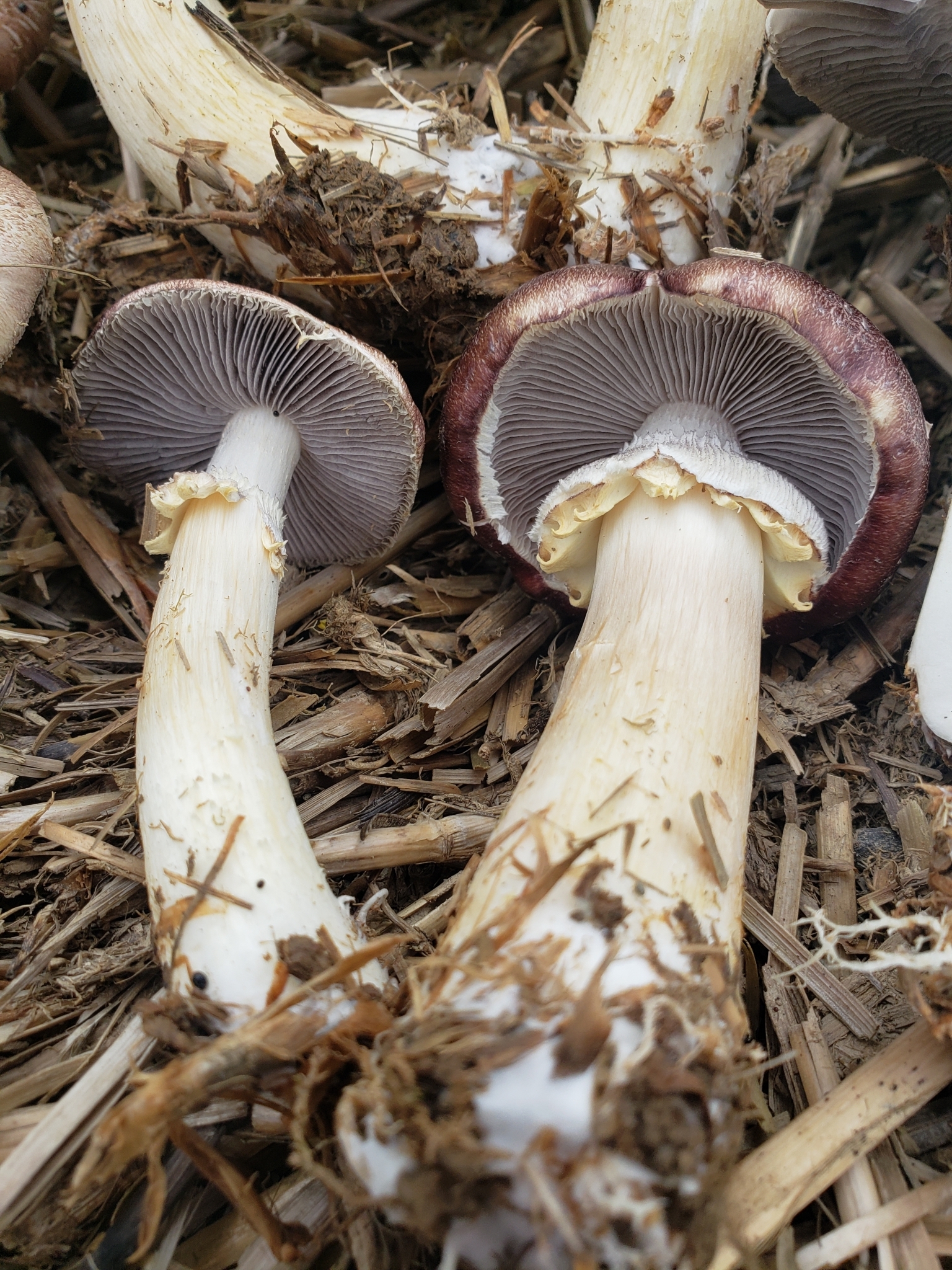
Where To Find Agaricus Mushrooms
Agaricus mushrooms are extremely common in fields, grasslands, meadows, and on the sides of wooded hiking trails. Almost anywhere you have animals grazing, you may also be able to find Agaricus. I’ve found a lot of Agaricus on trails frequented by equestrians. Another great place to find a great diversity of Agaricus mushrooms is in your local parks. They love planter beds and soil rich in compost. There are some forest-dwelling Agaricus as well, and a handful of species have an affinity for cypress duff.
It is also worthwhile to mention that Agaricus mushrooms also occur in disturbed and polluted areas. I refrain from picking mushrooms from urban settings or the sides of roads, as they are capable of bioaccumulating heavy metals and other toxins.
When Is Agaricus Season?
Like most other fungi, Agaricus mushrooms thrive when moisture and humidity are abundant. The beginning of the rainy season is typically a great time to find them, but just consider that if there’s moisture, there’s probably Agaricus somewhere. While some species can occur anytime of the year, others have preferential times of the year for fruiting.
In the Western United States and Canada, they are typically fall/winter mushrooms. This being said, mountainous regions can have spring/summer flushes, and in coastal regions with abundant fog, you can find them year-round.
In Colorado and the Southwestern Sky Islands, they typically occur in the summer with seasonal monsoons.
On the East Coast, they are common summer-winter, as long as there is moisture and above-freezing temperatures.
How To Pick Agaricus Mushrooms
Harvesting anything from the wild should be done with respect for the local ecosystem and the people who frequent it. Try to step lightly, and of course, don’t litter or cause erosion. Acquire permission before picking wild mushrooms, if necessary.
When you find a patch of Agaricus, take some time to observe them carefully before picking. Check all the recommended identification features to ensure you have an edible specimen.
If you’re still unsure, only pick 1-2 specimens for further investigation. Make sure to place any unidentified mushrooms aside from your edible species. Also, take good pictures in case the mushroom doesn’t make it back in one piece.

When it comes to harvesting, there are diverse schools of thought on the best method. Despite some folks insisting you should “cut, not pluck”, there is no evidence suggesting this method is better for the health of the fungi. Many scholars argue that it’s actually better to pluck. In some cases, unearthing the mushroom may be useful for identification purposes. For this reason, do as you and your community prefers.
Regardless, I do recommend cutting off the stem base of the mushroom before placing it in your bag or basket. This will help keep your mushrooms clean in the long run, as the stem butt is often caked with dirt.
Agaricus mushrooms are pretty fragile, so it’s recommended to transport them with care. For large, mature specimens, it may be good to separate the cap from the stem to prevent them from being damaged. Baskets are also preferred for this reason.
After harvesting, it is recommended to cook them within 24 hours. They are still edible if properly stored after a couple of days, but they diminish in quality. You know Agaricus mushrooms are no longer edible once they look heavily bruised or have any unpleasant odors.
Cooking Agaricus Mushrooms
Just thinking about cooking Agaricus gets my mouth watering. Unlike many other gourmet mushrooms, the flavor of Agaricus isn’t subtle. It’s strong and can provide a delicious flavor that complements a wide number of dishes.
Due to their close relation to the storebought button mushroom, you can use wild Agaricus in many of the same recipes. Just expect a stronger, more mushroomy flavor. Classic dishes like mushroom soup or casserole are all fair game for wild Agaricus. I personally really enjoy cooking them in a cream sauce for veggies, meat, or pasta.
One thing to note is that you should ALWAYS cook Agaricus mushrooms. Do not eat them raw. Not even store-bought button mushrooms should be eaten raw, despite them being readily found in salad bars. Agaricus mushrooms contain a compound called agaratine that may be mildly carcinogenic, and it can only be eliminated by cooking. Even if you make pizza with them, I recommend thoroughly cooking them before adding them as a topping.
Some folks dry Agaricus mushrooms and use them as a seasoning. I’ve also tried some Agaricus-infused liquors in the past that have a pretty delicious flavor.
Preserving Agaricus Mushrooms
The best way to preserve Agaricus mushrooms is probably by cooking and freezing them. To do this, simply cook them as you wish, either in a plain and simple sauté or with other ingredients. Once cooled down, place them in your freezer. Once frozen, you can use them as needed in your recipe. Do not freeze raw mushrooms, as their texture will be severely deteriorated by this process.
Agaricus mushrooms aren’t often dehydrated because they don’t rehydrate too well. As I mentioned earlier, once dried, they can be crushed or powdered to make a seasoning. This seasoning can be added to sauces as desired.
Lastly, it’s possible to make jerky with Agaricus mushrooms. To do this, simply cook them in a marinade of your choice, then dehydrate until chewy. Salt and acidic ingredients will help extend the shelf-life.
